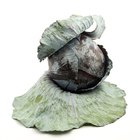
Coloring baby chickens is great for holidays or a fun gift. Dyeing baby chickens is not dangerous for the birds if done carefully and hygienically. If it's for Easter or St. Patrick's Day, dyeing your baby chickens can give them an impressive appearance. You can dye baby chickens once they're born or while they're still in the egg. The dye is temporary and will fade with time or once they grow new feathers.
Live Chicken Dye
Mix the nontoxic dye with water and stir until the water is fully colored. Use cups or small bowls for separate colors.
Rinse the chickens with distilled water to remove dirt or bacteria. This makes the dye hold better.
Dip the chickens into the colored water up to their necks and hold them there for at least five seconds. Remove them from the water and shake them gently to remove excess dye.
Daub their heads gently with the paintbrush or sponge. Avoid getting the dye into their eyes or beak because it's uncomfortable even though it's nontoxic.
Separate the chick for 15 to 30 minutes, or until dry, then repeat with the other baby chickens.
Egg Injection
Clean the eggs, needle and syringe with boiling water or antibacterial soap. The eggs should be within a day or two of hatching so you're essentially just giving the fully-developed chicken a colored bath before it hatches and not dyeing the embryo itself.
Draw about one drop (1 ml) of nontoxic dye into your syringe.
Insert the needle gently in the top of the egg and depress the plunger slowly to prevent leaking or spilling.
Cover the hole with paraffin wax or another nontoxic sealant (duct tape will work) and return the eggs to their nest or the incubator.
Related Articles

How to Make Glow in the Dark Eggs

How to Dye Pantyhose

How to Dye a White Bra Tan

How to Dye Tulle

How to Make a Gray Beard Dark Again

How to Darken Jeans
Does Packaged Chicken Have to Be Washed ...

How to Make Temporary Green Hair Color

How to Dye Sideburns

How to Change Hair Color From Red to ...

How to Remove Color From a Human Hair ...

How to Dye Faded Clothes

How to Dye Cotton Pants

How to Dye a Swimsuit

How to Tie Dye Shoelaces

Shelf Life of Hard Boiled Eggs

How to Cook a Raw Egg in Instant Ramen

How to Make Blue Food Coloring

How to Spray Dye a Synthetic Wig

How to Get Rid of the Gray in Beards
References
Resources
Tips
- Try your dyes on some plucked feathers before you try them on a live chicken.
Warnings
- Make sure the chickens are in a closed environment or outside so they can't run around your home and stain your furniture or walls.
Writer Bio
Ricky Andromeda has been writing since 1999. His articles have been published on various websites, specializing in pool, art, hunting, antiques, home improvement, chemistry and gambling. He holds a Bachelor of Arts in English from Louisiana State University and is pursuing a Master of Fine Arts in writing at the University of Arkansas.
Photo Credits
Jupiterimages/Pixland/Getty Images